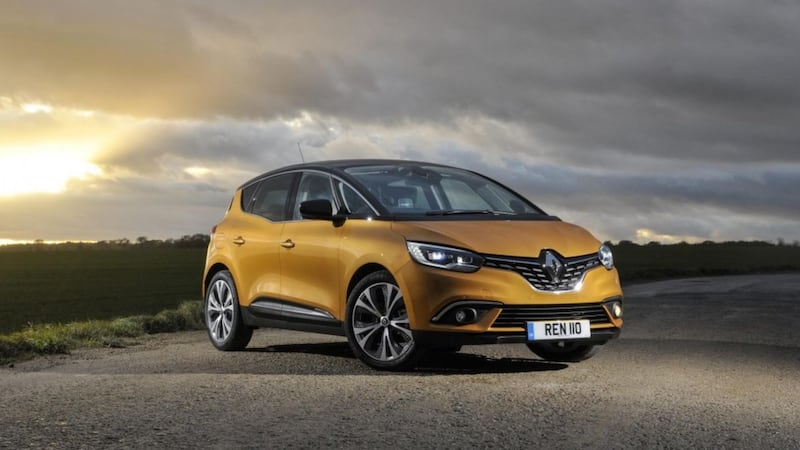What is it?
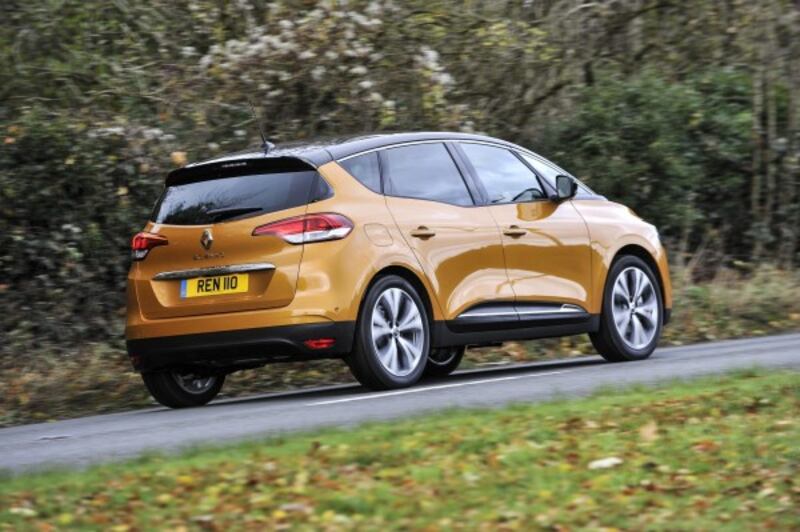
The Scenic nameplate first appeared on a Megane-based mini-MPV back in 1996. Since then, it’s gone through three model generations, finally landing on this 2018 model. But the times have shifted, and so Renault can’t simply keep producing a better version of its original MPV design – family buyers of today want their cars to be more practical, stylish and safe than ever. Most crucially for Renault, they also don’t really want an MPV – they’d rather a rugged SUV instead. So, even for Renault (whos name has been synonymous with the people-carrier since the Espace of 1984), attracting buyers to the Scenic is tricky.
What’s new?
Realised I haven't posted an actual picture of the car I've been moaning about all week, so here's an eye-catching, left-field MPV. But not a Grand one. pic.twitter.com/3SfTk43rQw
— Tom Wiltshire (@mctreckmeister) January 17, 2018
The latest Scenic is all-new and shares its underpinnings with the Megane hatch. To fool family buyers, Renault’s given its boxy body some clever detailing, plus some faux-muscularity in the wheel arches to give it more of an SUV style – far more appealing than its squared-off predecessor.
Everything else, including the majority of the engine line-up, is largely shared with the Megane – but the Scenic we’re testing here is fitted with Renault’s first ever mild hybrid system. More on that later.
What’s under the bonnet?
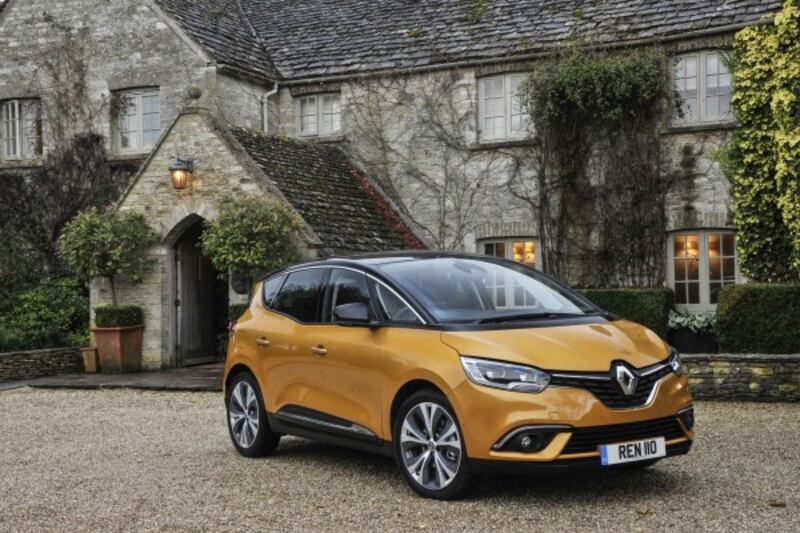
You can have your Scenic fitted with small-capacity turbocharged petrol engines, and 1.5- or 1.6-litre diesels. Our car was fitted with the most interesting powertrain of the bunch, though – the 1.5-litre diesel mated to Renault’s first ever hybrid system.
Named Hybrid Assist, it gives the diesel some extra punch when needed courtesy of a 13bhp electric motor, combined with a 48-volt battery under the rear seats. It generates its own power under braking and deceleration, too.
The real win is in fuel economy, where Renault claims 80.7mpg and just 94g/km of CO2. In reality, you won’t get close to that, but 60mpg should be achievable on a gentle cruise.
It’s quiet and refined, while performance is adequate around town – but the paltry 108bhp unit struggles on faster roads, and is totally gutless above 2,000rpm. If you’re planning on carrying full loads of passengers or luggage, we’d go for a more powerful engine.
What’s it like to drive?
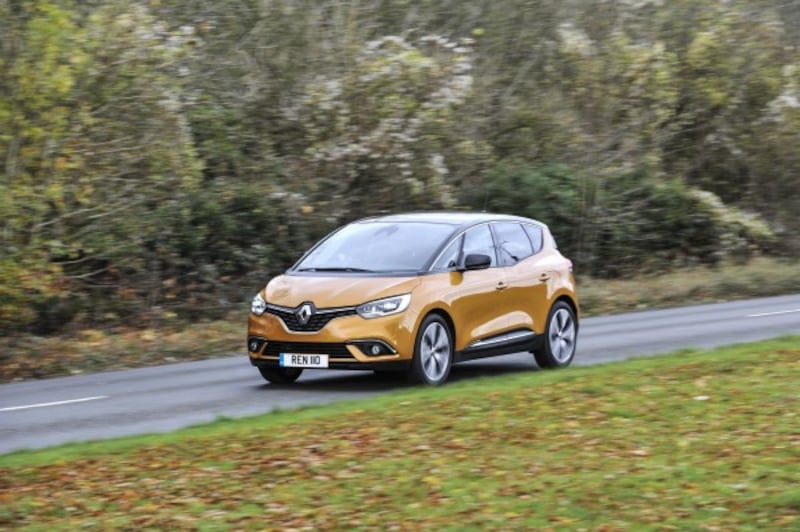
The Scenic’s sporty styling does not play out into sporty handling. Though you’d never expect a people-carrier to be the last word in driver involvement, the Scenic disappoints. The steering is lifeless and over-assisted, while the handling doesn’t inspire much confidence in faster bends.
This doesn’t translate to a soft and cushioned ride, either. Renault’s decision to fit 20-inch wheels across the range means the Scenic fidgets on rough surfaces and crashes into potholes. The Citroen C4 Picasso is far more cossetting, while crossover rivals – including Renault’s own Kadjar – offer a more engaging drive.
If you’re simply nipping around town, though, the Scenic will be fine. Just ensure you learn where the corners are, as the jutting front end is very difficult to judge.
How does it look?
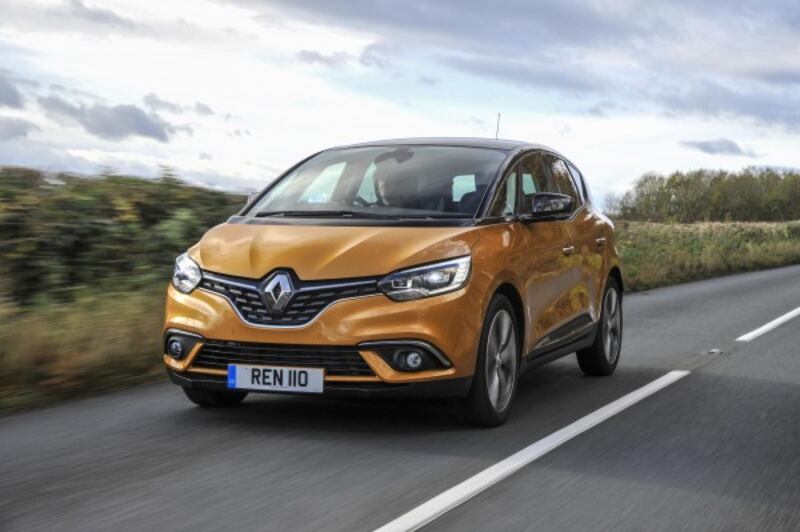
The Scenic has undergone a serious styling upgrade over the last generation, and it’s truly a good-looking and eye-catching design. It wear’s Renault’s ‘family face’ consisting of a vast diamond badge and glossy black detailing, while side cladding and boxy wheelarches give a certain SUV flair to the design. Our car was finished in retina-searing ‘Honey Yellow’, but other, less frightening shades are available if you’d rather fly under the radar.
The Renault badge is improving in image, too. The French brand’s good-looking and capable lineup means you’re unlikely to be ridiculed for your school run ride.
What’s it like inside?
Auto folding rear seats. They're very cool, but why?? pic.twitter.com/8EobcD8nk6
— Tom Wiltshire (@mctreckmeister) January 16, 2018
Inside, the Scenic is disappointing. The back seats, though ideal for children with drop-down tray tables and a good view out, are desperately uncomfortable for tall adults, with sharp plastic edges digging into your knees and a lack of headroom in models equipped with a sunroof.
Standard trim also means a dark cabin, dominated by black plastic. Irritatingly, Renault’s clad the portrait-orientated infotainment screen in a cheap-looking material that attracts fingerprints easily.
The movable centre console is a clever but pointless feature, while the storage cubby it contains is far too deep to be practical. The door bins are only average and the glovebox is tiny.
The Citroen C4 Picasso and Volkswagen Touran offer far higher-quality and more practical interiors. Boot space is class-leading, though.
What’s the spec like?
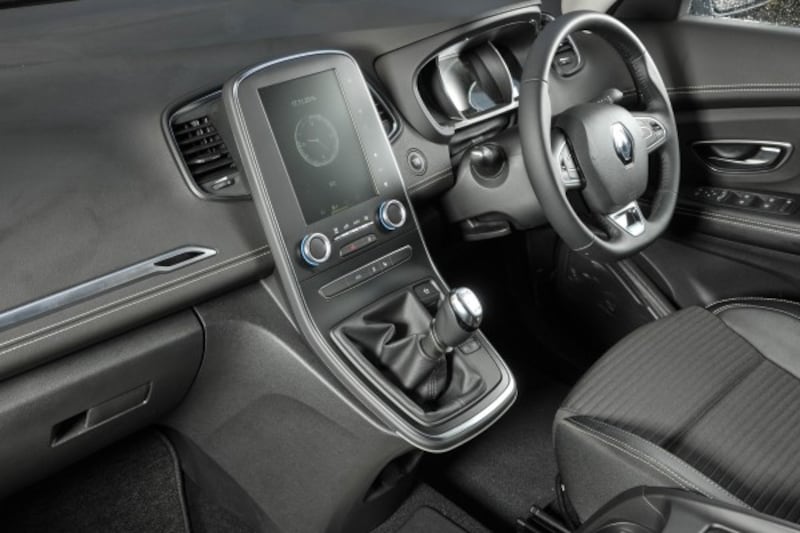
Our test car was loaded with a curious mix of equipment. LCD dials and a heads-up display feature, as does climate control, sat-nav, LED headlights and the aforementioned 20-inch alloy wheels.
However, notable omissions included heated and electrically operated front seats, which would have been pleasant as the car struggled to heat its cavernous interior in winter.
Even base Expression+ models get decent levels of kit, but you’ll have to step up to Dynamique Nav for sat-nav and the essential all-round parking sensors. Dynamique S Nav brings a panoramic glass roof, heads-up display and rear parking camera, as well as a larger infotainment display.
All cars do get vital safety kit including autonomous emergency braking, lane departure warning and traffic sign recognition.
Verdict
You want cupholders? Here's your damn cupholders!
Seriously though, why? If you keep this longer than 3yrs/30k miles I bet it's going to rattle like buggery. The mechanism is electrically activated too, just another thing to break.
Cupholders should not be this complex. pic.twitter.com/G1ev1OlilB— Tom Wiltshire (@mctreckmeister) January 16, 2018
From the company that popularised the mini-MPV format with the original Scenic, we’re disappointed that this new model falls so wide of the mark. It’s poor to drive and remarkably cramped in the rear, while the dark interior is nothing like as pleasant as the Citroen C4 Picasso’s.
Worringly for Renault, the Scenic feels less desirable to family buyers than its own SUV – the Kadjar. Those with big families may be more tempted by the seven-seat Grand Scenic, but this smaller, five-seat model feels poorly judged.
FACTS AT A GLANCE
Model as tested: Renault Scenic 1.5 dCi Hybrid Assist Dynamique S
Price: £28,700
Engine: 1.5-litre diesel with electric motor
Power: 108bhp
Torque (Nm): 260Nm
Max speed (mph): 114mph
0-60mph: 12.7s
MPG: 80.7mpg
Emissions (g/km): 94g/km
